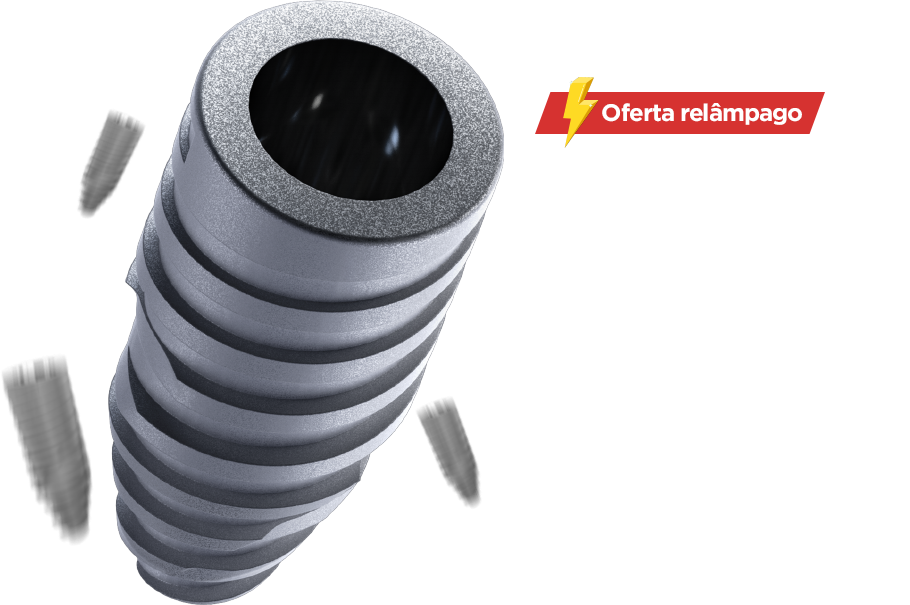Authors: Prof. Dr. Patricio Runnacles (UEPG), Prof. Dr. Rogério Goulart da Costa (PUC-PR)
The fabrication of provisional restorations on implants or even on natural teeth is of utmost importance for prosthetic rehabilitation. Temporary crowns play several relevant roles during implant treatment, including aesthetics, function, protection, communication, evaluation/study, accommodation of the stomatognathic system, etc. Moreover, in the context of implants, they help define the contours of the oral mucosa and build the emergence profile, which is responsible for integrating white and pink aesthetics, a topic widely discussed nowadays.
Familiarity with various techniques for making provisional restorations on implants can facilitate the clinician’s work during patient appointments and streamline the consultation time. The most commonly used method, provisional restorations fabricated by the laboratory, can be achieved through techniques such as the pre-mold technique or the stock veneer technique. There are other methods as well, but these seem to be the most straightforward and rapid. By selecting the most suitable technique for each case, one can harness the advantages of each approach.
This process is particularly facilitated in implant dentistry, often involving the capture of a provisional cylinder. As manufacturers identified this step, they started providing pre-fabricated cylinders. In the Arcsys implant system, for instance, we use the multifunctional transfer made of PEEK.
The technique described below demonstrates the capture of the patient’s existing provisional restoration, which is modified as needed. Once the respective component is properly installed, the provisional cylinder is placed.
 |
 |
 |
 |
 |
 |
 |
 |
 |
 |
 |
 |
The passivity of crown insertion over the cylinder is confirmed, and the cylinder is captured using a flowable resin. A more modern and current approach is to use a Flow resin, such as Opus Bulk Fill Flow (FGM), as increments of up to 5mm can be polymerized simultaneously and efficiently, saving clinical time. After the polymerization is completed, the cylinder/provisional assembly is removed, and any existing gap is filled outside the mouth. Once the chemical reaction is finished, the finishing of the new provisional crown begins.
The emergence profile starts to take shape, which is a crucial moment in rehabilitation due to the inherent advantages in terms of tissue maturation and peri-implant tissue longevity. Attention to details can ensure advanced health, function, and aesthetics in the final result of the future prosthesis.
Equally important is the polishing stage, which should be carried out meticulously using files and rubber points. Before the final polishing, a thin layer of Ambar adhesive (FGM) can be applied to seal potential pores, acting like a type of glaze. The process is then completed with brushes, felt discs, polishing pastes, and so on.
An essential procedure in prosthetic rehabilitation, the fabrication of a new provisional crown can determine the excellence of the treatment. As the old sage used to say, “Show me your provisional and I will tell you what kind of prosthetist you are.”
References
Cooper LF, Reside GJ, Raes F, Garriga JS, Tarrida LG, Wiltfang J, Kern M, De Bruyn H. Immediate provisionalization of dental implants placed in healed alveolar ridges and extraction sockets: a 5-year prospective evaluation. Int J Oral Maxillofac Implants. 2014 May-Jun;29(3):709-17.
Lopes FAM, Ohiro A, Araújo C dos RP de, Tomasi C. Posicionamento correto dos implantes e formato das coroas provisórias: obtendo um sorriso perfeito. RBP – Revista Brasileira de Implantodontia e Prótese sobre Implantes. 2006 ; 13( abr./ju 2006): 107-112.
Luthi, L. F., Dresch, C. P., Rebelatto, C., Dallanora, L. J., & Varela, R. F. (2013). COROA PROVISÓRIA APÓS INTALAÇÃO DE IMPLANTE IMEDIATO EM ÁREA ESTÉTICA. Ação Odonto, 1(1), 69. Recuperado de https://unoesc.emnuvens.com.br/acaodonto/article/view/3941




























